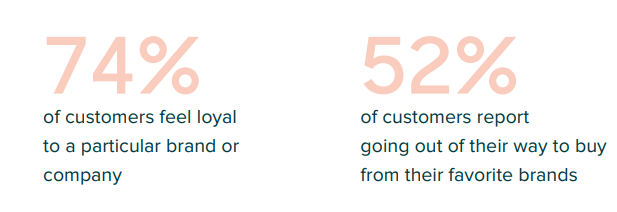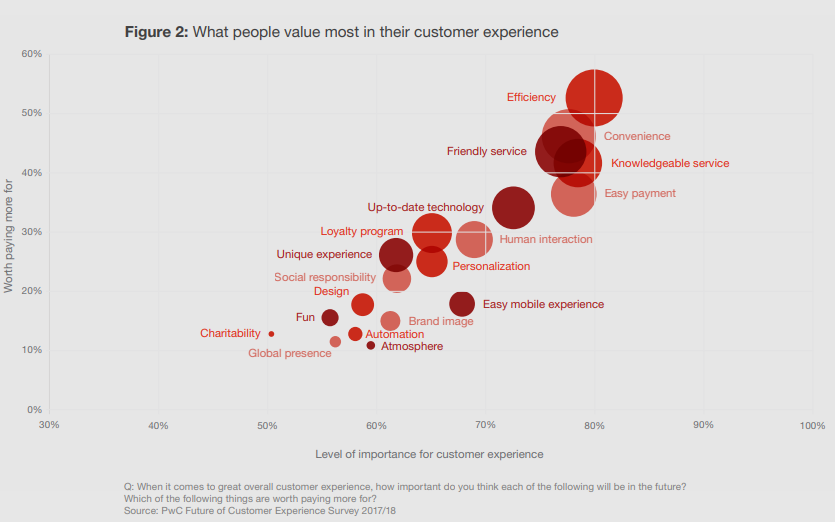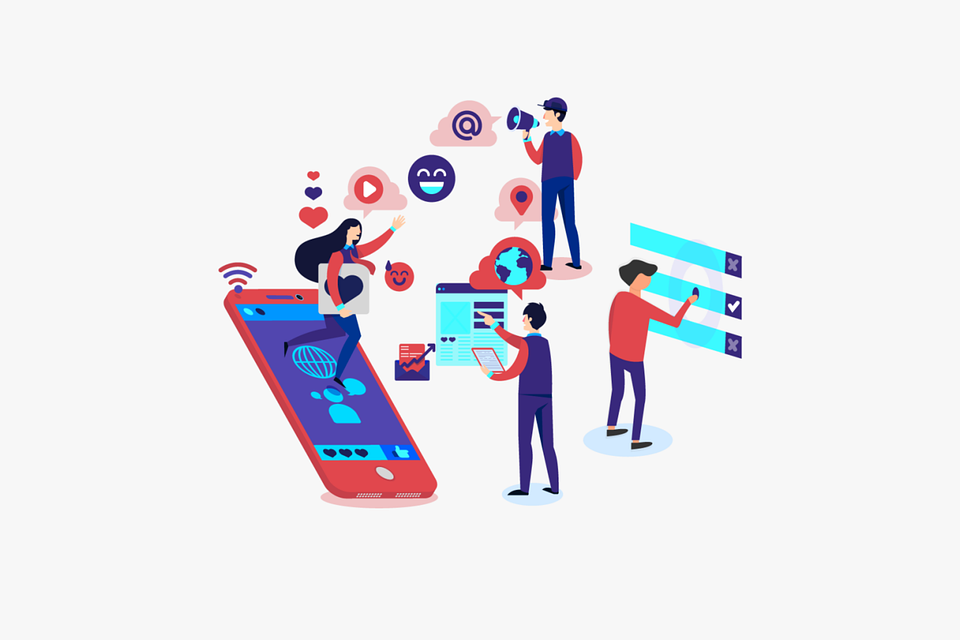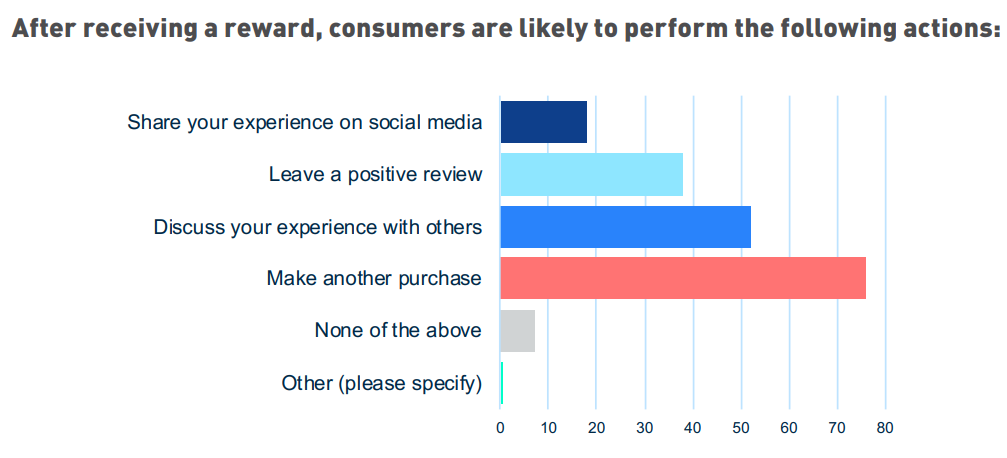All enterprises are constantly looking for ways to increase purchases and boost profits. Often, this is done by attracting a constant stream of new customers, marketing products to them, and persuading them to purchase. However, this can be time-consuming and use up business resources by focusing on one-time customers. Instead, a more effective way of generating purchases is by looking into customer retention.
Retention avoids some of the hurdles faced with customer acquisition – it allows your business to build up an understanding of your customer base and appeals to customers who have a guaranteed interest in your products. 52% of customers already go out of their way to shop with their favorite brands. Customer retention helps to ensure that you are one of those brands, seeing repeat purchases from growing loyalty.

What Is Customer Retention?
Focusing entirely on keeping previous customers coming back to your business, customer retention builds relationships with your customer base to inspire loyalty. By providing customer support and learning customer needs, retention strategies target existing customers more specifically. This generates business profits and helps with scaling your business by encouraging repeat purchases and customer reliance on your products or services.
Retention strategies also minimize the spending required by marketing to attract and engage new leads to create more conversions. This moves the focus away from the top of the funnel marketing strategies, instead looking at stages further down the funnel to maintain your customer base. A retention approach aims to create sustainable customer growth with minimal churn, leading to long-lasting customer loyalty to your business.
8 Customer Retention Strategies
Building customer retention into your B2C or B2B marketing strategies takes time, using various elements to reach the same goal. By developing trust with customers through marketing, existing customers feel supported and valued. This leads customers to favor your business, influencing where they make their future purchases. This can be done with the following customer retention strategies:
-
Personalization
One of the main benefits of customer retention is that you’re reaching out to customers that have interacted with your business before. Your business data analytics can show their average order value, the products they bought or looked at, and what marketing campaigns they engaged with. Using this information identifies the best ways to engage with your customer, so your marketing can focus on these.
Customers engage well with personalized advertising and messaging. So much so that consumers find company messages that are not personally relevant as annoying as dropped calls. Using customer segmentation can help create groups with similar product interests, meaning you can target customers with more personally relevant products. Likewise, creating suggestions based on previous customer purchases gives your marketing a personalized edge.

2. Support Your Customers Well
89% of customers are more likely to make additional purchases after a positive experience with customer service. This covers a whole range of aspects that make up a great customer service experience, including timely responses, useful and fully explained answers to questions, friendly interactions, and access across all your business’s digital presences. These not only resolve customer issues efficiently but create a positive atmosphere throughout the experience.
Customer support services help your business gain customer trust, making them feel more confident in future transactions they may have with you. Ensure customers are aware of the services you have available to help them and how they can use these. Whether physical in-store assistance, automated chatbots, or hosted phone solutions, these are only useful if customers know they exist and choose to use them.
3. Store Customer Information
The longer your customers stick by you, the more interactions you will have with them and the history you can draw on. Use widgets and customer management software to record customer information such as contact they have with customer support, the date they subscribed to your email list, or key engagements with your brand. Highlighting this customer information shows your business values its customers and their loyalty.
Particularly knowing which products customers have purchased or the services they are using can give you a headstart in providing quality customer service. This helps customers have smoother introductions with members of staff and reach problem resolutions quicker. Outside of customer service, this information can be used in celebratory emails, marking customer milestones in their loyalty to your business.
4. Exceed Expectations
Managing customer expectations can be tricky but is essential if you intend to retain customers. This regards customer service, product functionality, the payment process, and all other elements that make up the customer journey. For 80% of US consumers, these expectations revolve around speed, convenience, knowledgeable help, and friendly service.

Be honest about what your business can provide, admit your limitations, and don’t over-promise. This aligns customer expectations with what is possible and builds their trust. Nonetheless, wherever possible, exceed these expectations. Whether this is sharing discount codes, responding quicker than anticipated, including extras in customer orders, or something else, it makes customers feel special and more likely to advocate for your business.
5. Develop Customer Communications
Without unified communications, your business will be forgotten by customers. Email subscription lists, social media interactions, and web chats can all be used to remind previous customers of new products and service updates. Customers see the progress of your business, as well as being drawn back in by new sales. This encourages customers to make repeat purchases alongside developing a sense of relationship with a business.
Automation can be used to manage your marketing communication channels, reducing the work needed to maintain contact with customers. Linking these to other platforms where customers connect with your brand can boost your engagement and highlight the variety of content and resources your business has available. Marketing communications can also draw attention to key events or important dates for your business.
6. Use Omnichannel Marketing
Customers approach your business through a variety of channels, so these need to have aligned purposes and messages. Omnichannel marketing creates a unified user experience across these channels, ensuring all communications are picked up and directing customers to your eCommerce website. Being active across a range of channels means, regardless of which ones are used, customers still receive the same business message.
Certain platforms lend themselves to different content, and leaning into this retains your existing customers’ engagement. However, these should work together to create a singular experience, simplifying the customer journey. Similarly, other business commerce tools, like those that automated inventory management forecasting or web calculators, help oversee processes across the business, creating less opportunity for mistakes and more unified control over multiple areas.

7. Work on Feedback
Inviting customers to provide feedback on your products and services shows not only a willingness to continually improve your business but interest in what your customers have to say. This values their thoughts and opinions, using them to shape and direct the business. Tackling these can anticipate problems and inform your proactive customer care, together with prioritizing customer wants and needs in your business plans.
It’s also a chance to gauge how customers think of your business and measure KPIs. Analyzing this information can show if your customer retention is succeeding or if changes need to be made. Indicators such as customer satisfaction ratings, net promoter scores, and customer effort scores highlight customers’ experiences with your business. These show how likely customers are to return to your business and can emphasize areas for improvement.
8. Create Loyalty Schemes
Affiliate and loyalty schemes reward customers for their repeated purchases and encourage them to advocate for your business. There are a variety of these schemes – offering discounts, free products, events, exclusive access, or store credit for making many purchases, being a customer for some time, or boosting customer acquisition by introducing friends to the brand. Whatever it is, it should be something your customer base wants.
For 75% of customers, receiving incentives makes them more likely to make future purchases. It again shows that your business values its customers and their loyalty, giving customers more reasons to stay. This also acts to exceed expectations, thanking and rewarding customers regularly in return for their continued custom. Loyalty rewards can also be used to promote other products and services, giving customers a trial run or sample to test out.

Get Your Customer Retention Strategy in Place Today
Marketing campaigns transform when you start putting the customers you already have at the heart of them. Most of the strategy tips relate to improving customer service and better tailoring to customer needs. When customers know your business has an interest in them and values their opinions, they are less likely to churn.
Whether using your own eCommerce website or selling on Amazon and other marketplace-style platforms, start implementing your customer retention strategy to see your customer base grow. By learning from feedback and key data analytics with hadoop file system, improve your customer relations, and increase your repeat purchases and brand loyalty. With good customer retention, your business profits will increase well into the future.



